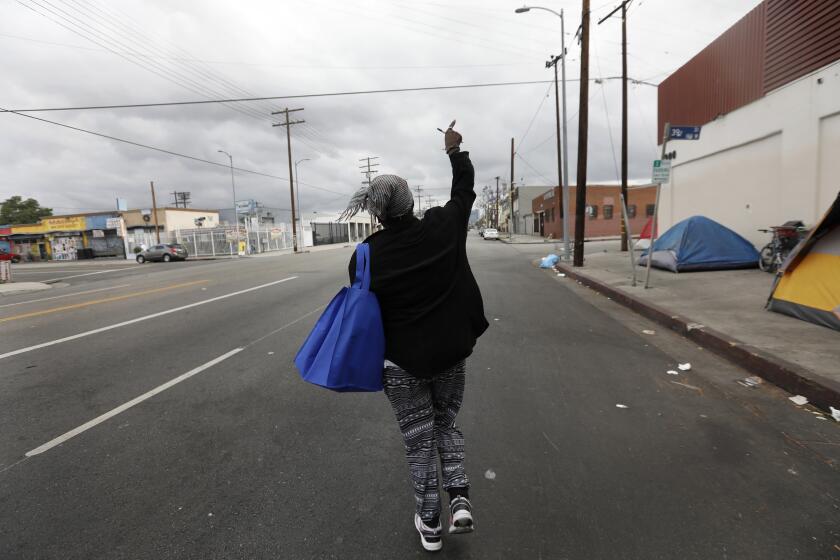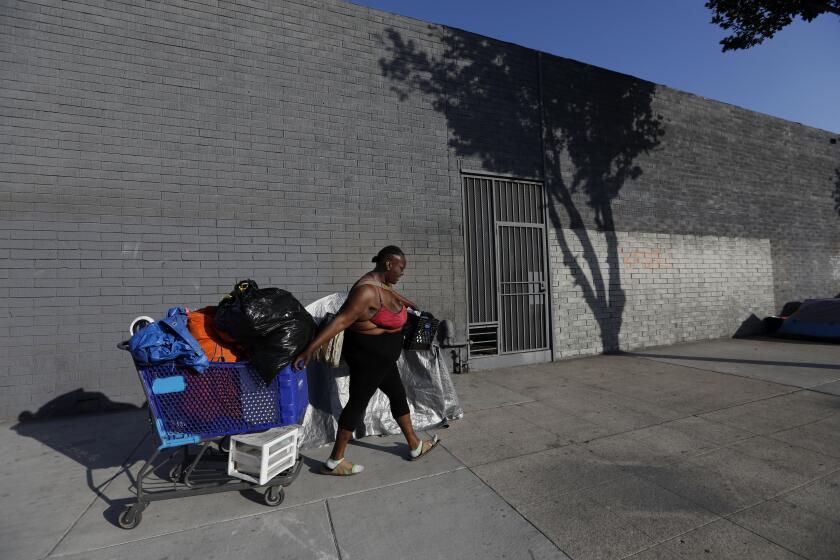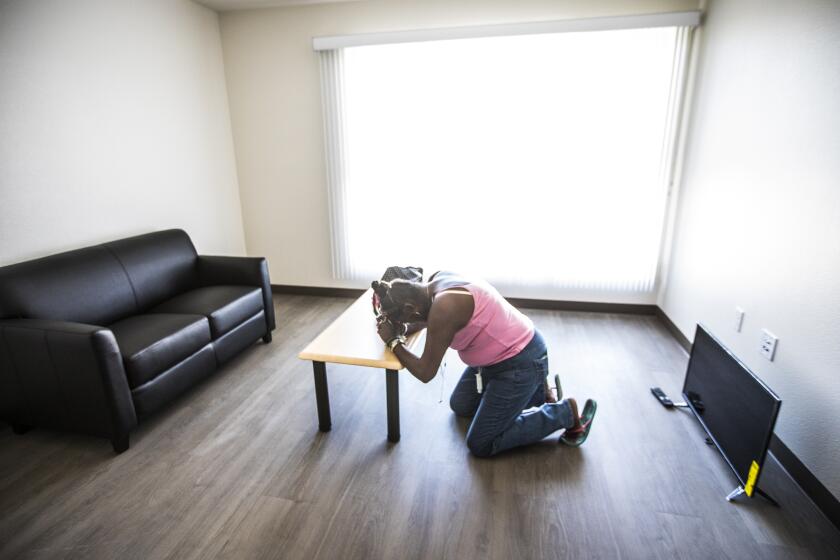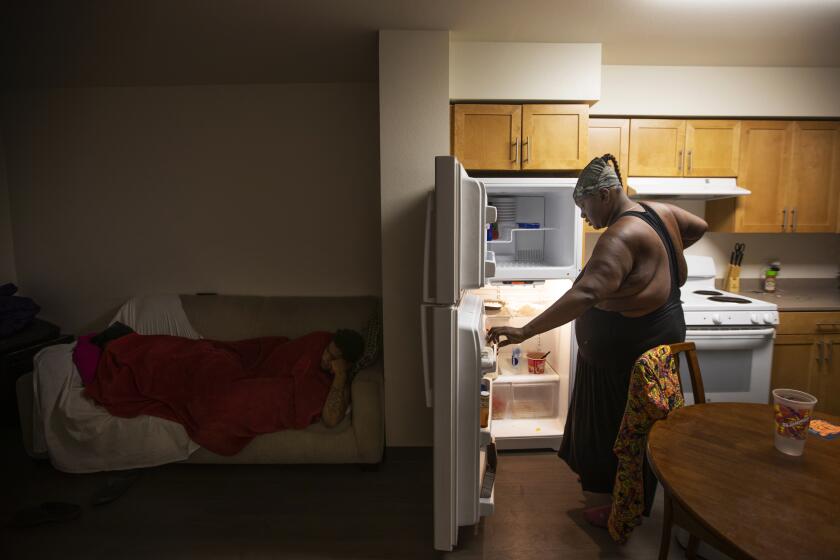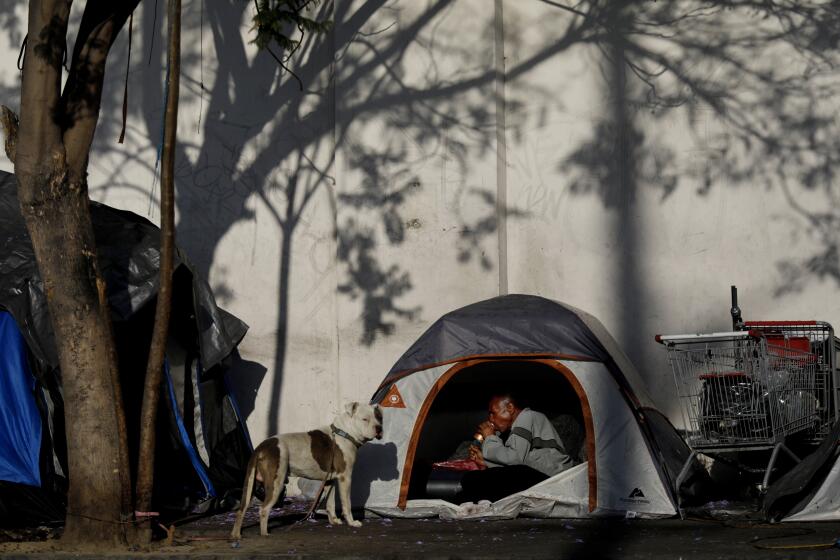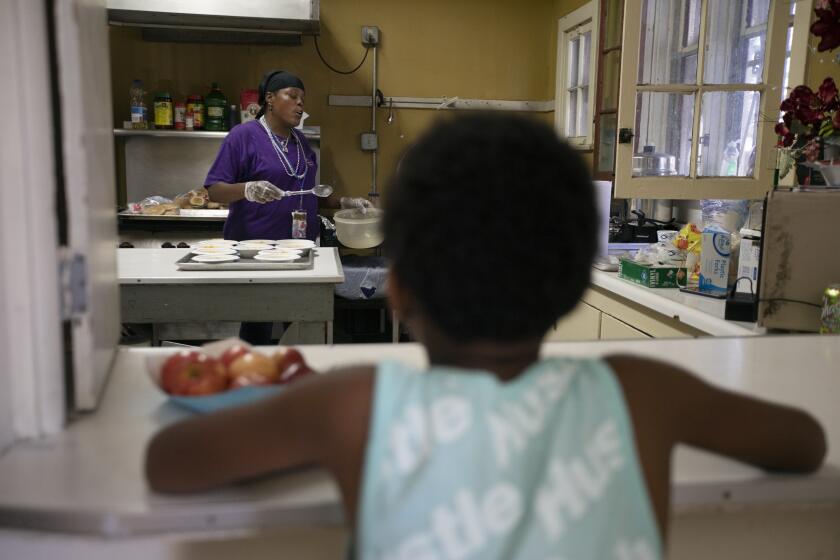From the street to the mayor’s office: Assessing L.A.’s new initiative on homelessness
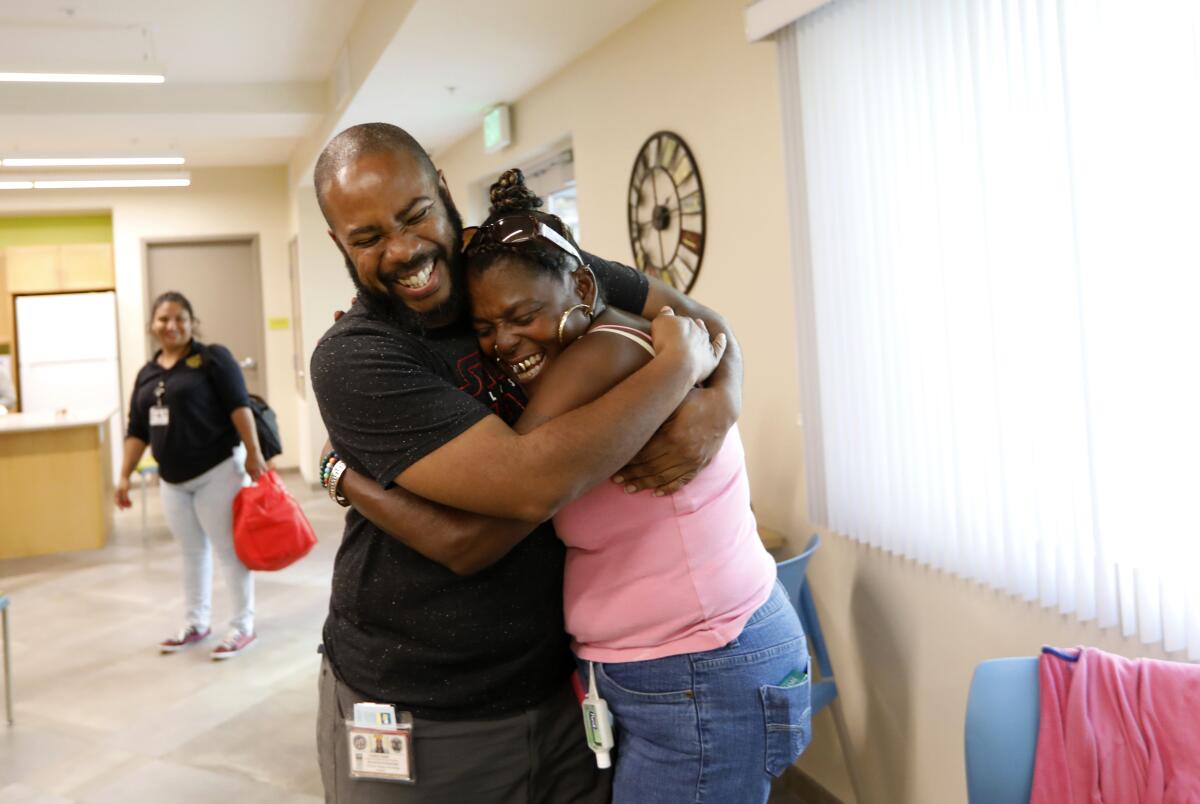
- Share via
When Los Angeles city and county agencies introduced an initiative last year to move homeless individuals into housing, they drew upon the cooperation of politicians and other public officials, outreach workers, property managers, business owners and police officers.
The initiative, Encampment to Home, took 10 months and cost taxpayers $850,000. Efforts focused on encampments of homeless people in two South L.A. neighborhoods. Of the 106 residents who were housed, 68 moved into two new apartment buildings at El Segundo Boulevard and the 110 Freeway.
With help from the United Way, Encampment to Home was more ambitious than anything the county had tried in years and was the subject of a series of stories in The Times that profiled seven people who had been living on the sidewalks of Broadway Place, near the Volunteers of America shelter a few miles south of downtown L.A.
The Times contacted some organizers and supporters of Encampment to Home and asked for their views on the program. Their comments have been edited for space and clarity.
::

Elizabeth Boyce, director of access, referral and engagement for Housing for Health, discusses the many challenges of housing the homeless.
Elizabeth Boyce is director of access, referral and engagement for Housing for Health, a division of the county’s Department of Health Services. She helped lead the program.
What did you learn from Encampment to Home?
People in encampments want to get off the streets, and when housed with adequate services, they will remain in permanent homes.
Equipping the outreach teams with direct access to permanent housing resources — and giving them the tools to help the street-based homeless navigate the paperwork and activities necessary to secure permanent housing — was critical. Lastly, coordinating all parties that play a role in obtaining permanent housing ... was extremely helpful.
Having more client-centered and coordinated sanitation services would be beneficial. And there has to be more access to more housing within communities where the encampments are located, and communities have to be willing to allow for housing.
::
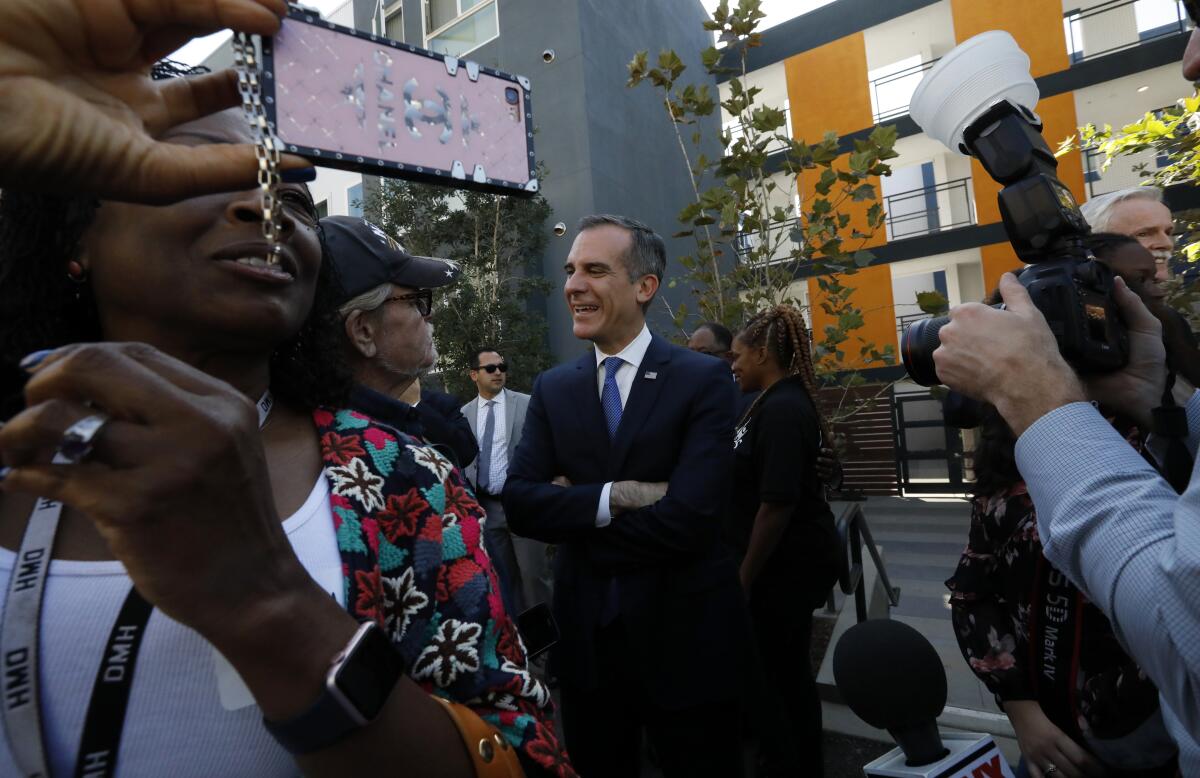
Mayor Eric Garcetti attended the grand opening of the two apartment buildings in October.
How do you overcome neighborhood opposition?
The noise from NIMBYism is nothing compared to the power of progress I have witnessed as Angelenos have come together to confront the homelessness and housing crisis. Research has shown that the vast majority of Angelenos want to be a part of the solution to this crisis, and they’re willing to bring those solutions into their neighborhoods. ... I have been inspired by the growing courage of people across our city to say “yes” to the housing and healing unhoused Angelenos urgently need and deserve. ...
And that’s not rhetoric — it’s reality borne out in numbers. We met my goal to permit 100,000 new units of housing two years ahead of schedule.
As a direct result of Proposition HHH, we’re dramatically expanding our pipeline of long-lasting, high-quality affordable housing that is going to benefit our city for generations to come. All told, 110 Proposition HHH projects are in the pipeline totaling commitments to build thousands of units of supportive housing.
::
City Councilman Joe Buscaino represents the district where the two apartment buildings are located.
How do you respond to complaints that the former encampment residents have made problems worse in their new neighborhood?
The bottom line is that formerly homeless people living indoors have a much smaller impact on neighborhoods than sidewalk encampments. ... It is incumbent on the city to ensure that neighborhoods that accept homeless housing remain clean and free of sidewalk encampments, so that residents see practical benefits to welcoming these facilities.
::
John Helyar is a manager with Homeless Outreach Program Integrated Care System,. He oversaw outreach workers who interviewed potential candidates for the program.
What were the greatest challenges for outreach workers?
Encampment to Home represented the first (and only) time that as an outreach team we were able to promise our clients housing. Normally we can only talk about eligibility, waiting lists and hope. For this project, we could promise a set of keys to everyone in the encampment.
But with those promises came delays. Clients knew it was all too good to be true, that we were just another program promising a miracle that would never happen. And that naturally angered them. They’d fallen for that bait again.
Once clients began to be housed, there were the further delays for some who were not housed in the two apartment buildings. ... All of this just made the resentment and fear worse for those still waiting, and they got frantic when we had to redo income paperwork because it had expired.
They assumed we were incompetent, had lost the paperwork ... one lousy excuse after another.
It would be nice to be able to shorten the paperwork cycle and get people housed much faster. But this project was so much faster than the normal process that to us it felt miraculous.

::
Elena Stern is the public information director for the city Department of Public Works, whose Bureau of Sanitation directed the cleanups along Broadway Place.
Tent-dwelling Angelenos complain about how the city handles cleanups. Is that about to change?
In early October, [the sanitation department] will roll out a significant redeployment of our teams that will increase trust and communication between our employees and people experiencing homelessness. ...
The regional deployment of 30 teams (up from the current 20) will allow for daily and weekly service to many encampments. This will mean access to expanded services, such as regular trash collection at high-density encampments, removal of hazardous materials that pose health and safety risks and the use of mobile hygiene stations.
::
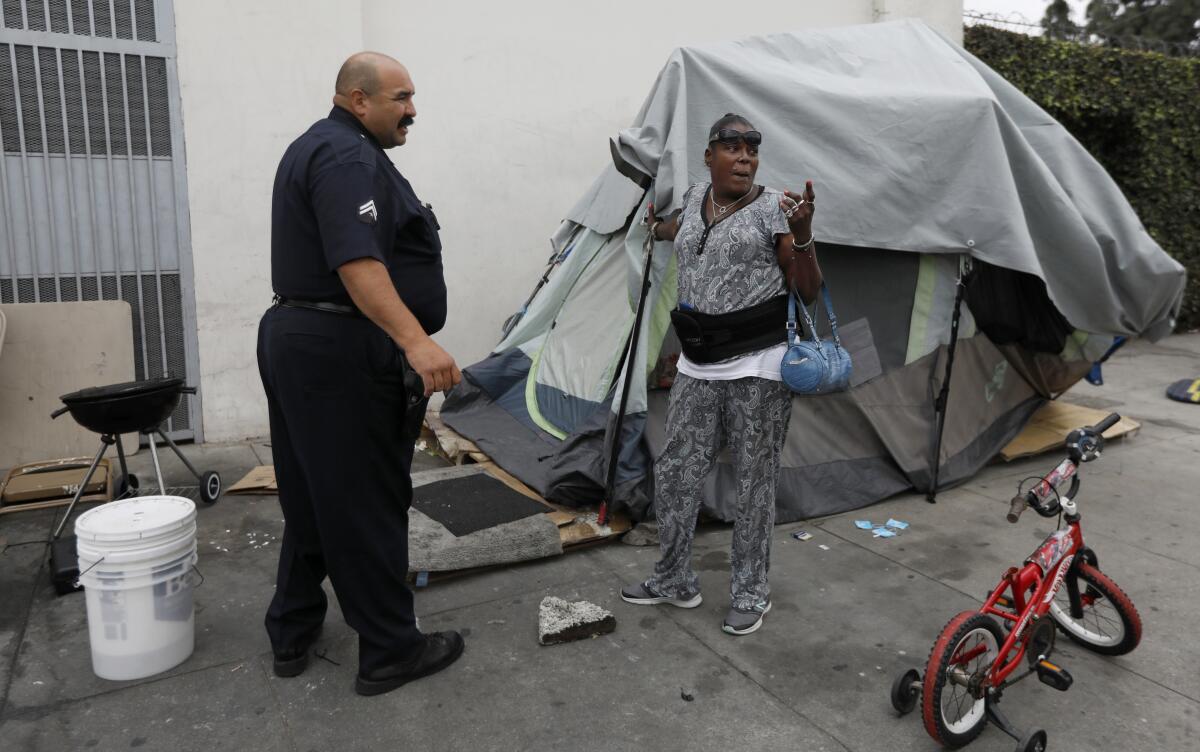
Jerry Ballesteros is a senior lead officer with the Los Angeles Police Department. He helped oversee the work of the sanitation crews as they periodically cleaned up the encampment on Broadway Place.
How has your job on the street changed in response to the homelessness crisis?
What I have seen on the street is — in my opinion — the end result of the use of gateway drugs that have led to the stronger drugs like meth, heroin and cocaine.
There are truly people out there who deserve help and services. These are the people I try and help. But I don’t believe in helping the able-bodied persons who are just looking for the easy handout.
I also have seen a huge increase in the numbers of mentally ill persons on the street. Years ago we would run into a seriously psychotic person once in a while. Now it seems like it’s a daily occurrence.
::
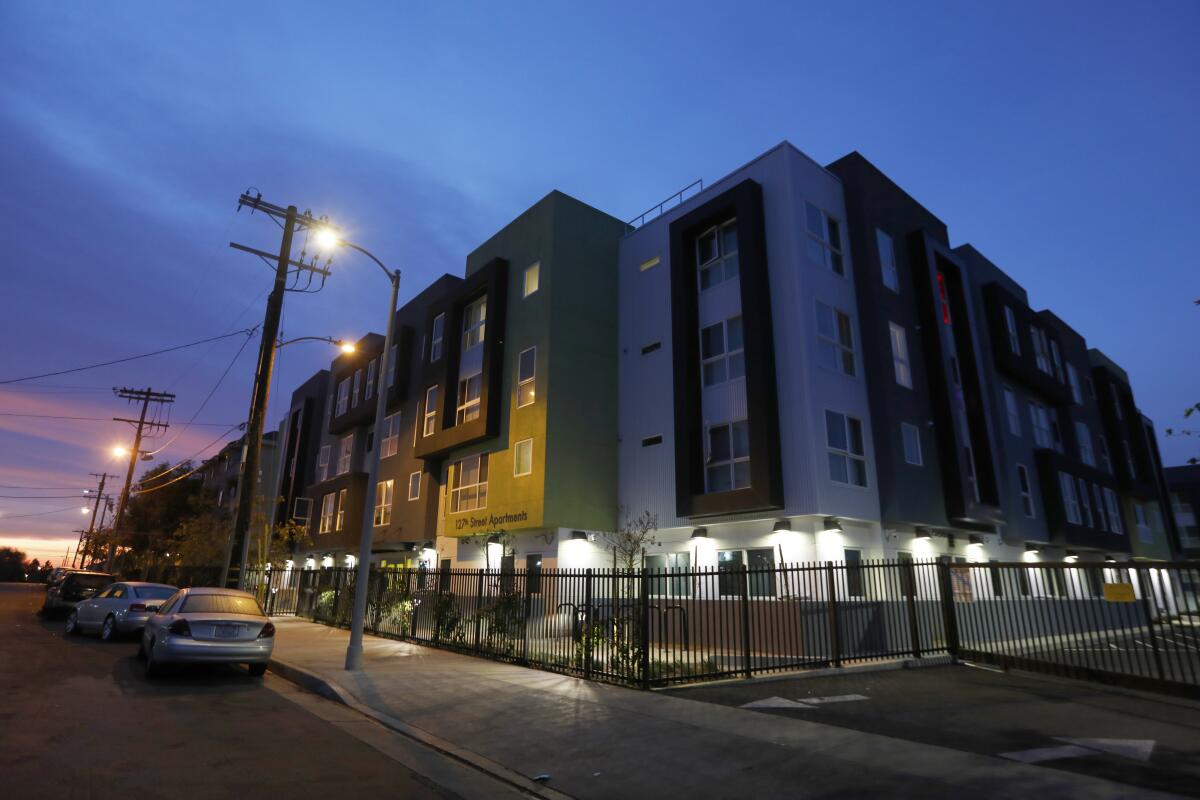
Aaron Mandel is executive vice president with real estate firm Meta Housing, which developed the two apartment buildings in Harbor Gateway.
What distinguishes these buildings and their designs from housing projects that the city developed in years past?
We spent a lot of time on the front end ... considering how the architecture fits into the greater neighborhood and how the residents will interact with the design on a daily basis.
We have partnered with John Stewart Co. and the People Concern. A lack of funding and/or supportive services can quickly lead to compounding operating problems, so we have also partnered with several county agencies to ensure there is sufficient funding and appropriate services.
::

Melissa Vollbrecht, program director for the People Concern, discusses the complexities of moving from homelessness to housing.
Melissa Vollbrecht is a program director with the People Concern, which was selected by Meta Housing to provide counseling and services for residents.
How do you help the people who have been housed break the habits and behaviors of the street?
All of our goals in housing retention service hinge on building insight. Insight leads to buy-in. We create targeted intervention plans for each individual, interventions that can be viewed as priorities over the survival activities that have been in place for months or years.
Survival on the streets — or in historically oppressed communities — is reliant on masking vulnerability. Case managers are faced with the big task of creating a space of non-judgment within which people feel safe sharing their vulnerabilities. If we are lucky enough to be trusted in that way, we are able to focus on strengths and challenges. From there, we help them become good neighbors and tenants and develop independent living skills.
We want to let them know that it is OK not to feel exclusively happy when they move into housing ... OK to feel alone, scared, uncomfortable and uncertain. ... It’s important to not ignore those feelings and to work to unpack them with the available, reliable team including case managers, therapists, doctors and other community resources.
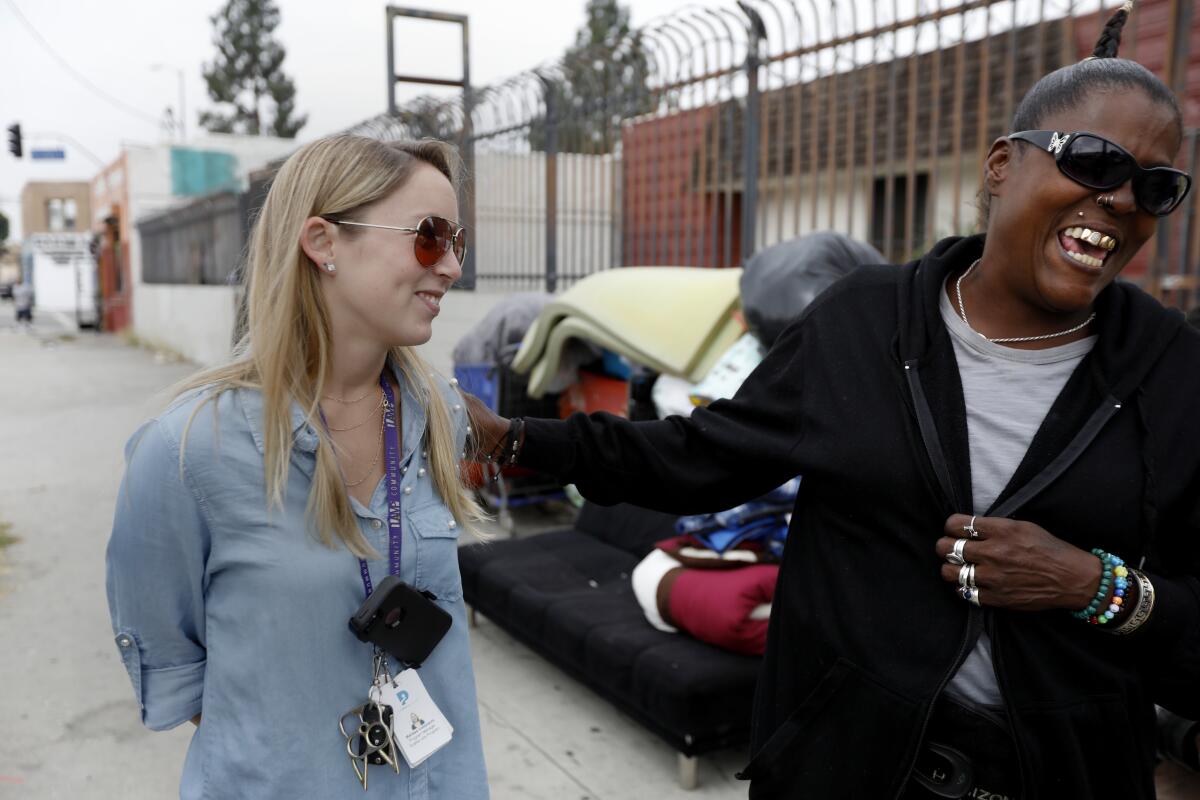
::
Dana Shareef is the property manager for John Stewart Co., which Meta Housing brought in to manage the apartments.
How would you characterize these last 12 months?
For most of the residents, the idea of being in a brand new environment was a bit scary. Some made mistakes and displayed inconsistency in their behavior. They had been in “survival mode” for so long that it was difficult to change that way of life. ... Most of them haven’t had a place to call their own in many years.
The majority of people who just made the one-year anniversary of their move-in date are making great efforts to change their behavior. It has been a humbling journey for all of us, but along the way we have been able to change many lives.
::
Chris Ko, managing director of homeless initiatives for the United Way of Greater Los Angeles, was one of the architects of Encampment to Home.
What lies ahead?
Our system’s ability today to help someone secure housing is nearly unprecedented. Measure H is what makes it possible for us to employ the lessons learned in this pilot: The measure has tripled the volume of street outreach; it funds system coordinators that stitch the pieces together, and it’s increased the amount of supportive services in future housing projects and existing ones, too.
Two specific projects are underway: the city of Los Angeles is deploying community and Los Angeles Homeless Services Authority outreach teams to help people sleeping outside into their A Bridge Home projects. And the county’s multiple disciplinary outreach teams will do the same when the county’s newly enriched shelters open.
::
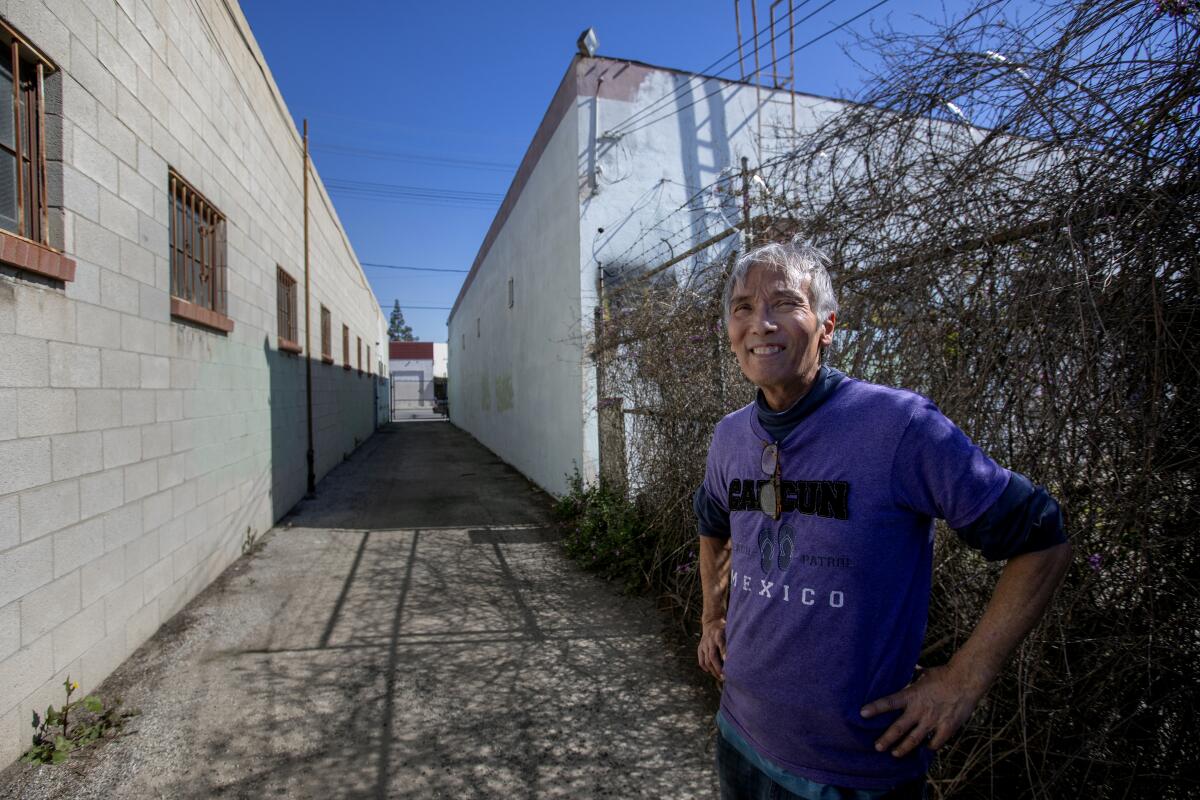
Alan Ishii owns the George-David Co., a machine shop on Broadway Place opposite the encampment. Ishii knew its residents and watched them move to their new apartments.
How has the neighborhood changed over the years?
This is our 64th year at this location. When we moved here, it was a mixed commercial and residential neighborhood. The homeless shelter was established about 15 years ago. Alcohol and drugs were prohibited. A few residents began sleeping on the street to continue using drugs.
People would walk by my shop coming and going from the shelter. Some were friendly, some not. There were arrests for drug sales. More and more tents were pitched. Some residents were very nice. I gladly charged their phones and appliances. We became friends. I am proud to say that I remain friends with a few of the people. I consider Yvette Grant [Big Mama] and Horace [Lackey] very good friends.
It is troubling how entitlements enable addiction. Politicians think tossing money is like putting out a fire, when it is really fodder for the blaze.
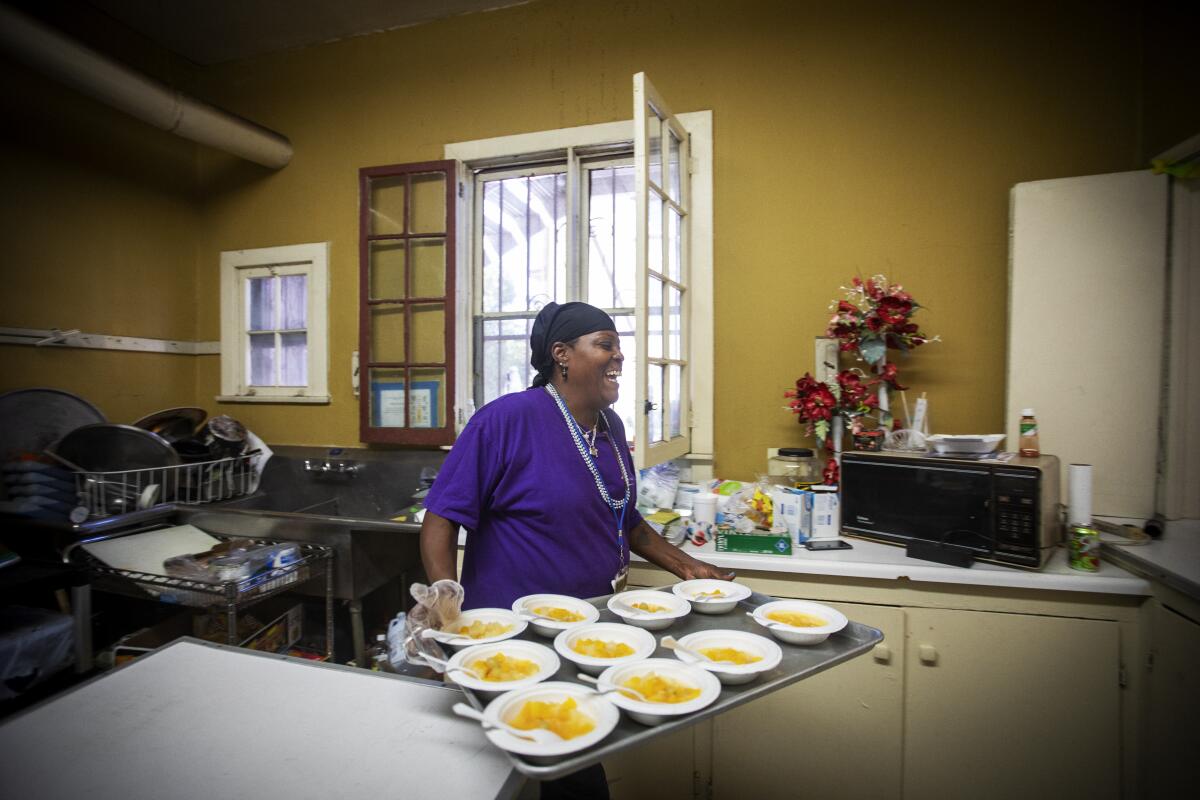
I feel that we must make it clear to future generations that working is a reward, not a task. I met a man in his 40s who told me he was writing his resume. I asked what he had done in the past. He said he had never had a job. People need a purpose in life and guidance and motivation.
More to Read
Sign up for Essential California
The most important California stories and recommendations in your inbox every morning.
You may occasionally receive promotional content from the Los Angeles Times.
